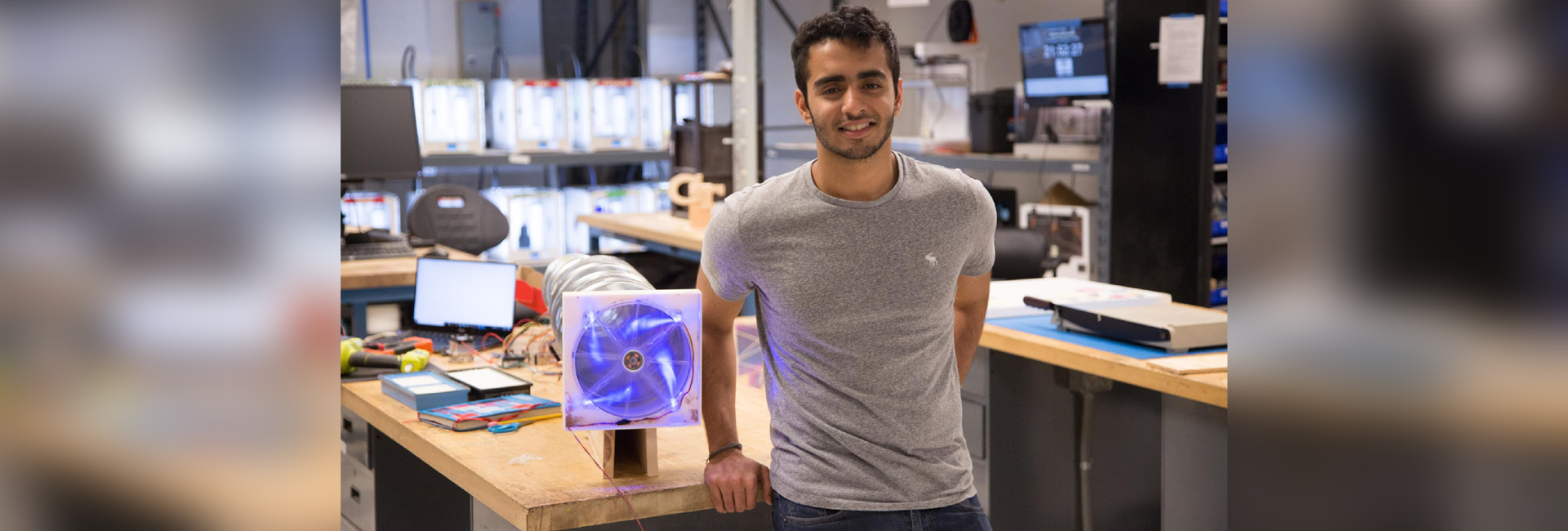(October 30, 2024) Varin Sikka, a 16-year-old innovator, is advancing climate technology with his invention, AirCat, a Direct Air Capture (DAC) system designed to capture carbon dioxide directly from the atmosphere. AirCat addresses the high energy costs traditionally associated with DAC systems and has been in development for over three years. Sikka’s invention could play a pivotal role in climate change mitigation by offering a new solution to the ongoing issue of carbon emissions.
Sikka’s journey with AirCat began in 2020 when intense wildfires near his home in California blanketed the sky in an ominous orange hue for weeks. “The wildfires brought the reality of climate change right to my doorstep,” Sikka said. “Seeing it first-hand drove home the urgency of this issue.” The fires had an immediate impact on his commitment to climate action, inspiring him to dedicate countless hours to developing a solution. He recognized that traditional DAC systems were often criticized for their high energy consumption, and he set out to create a more efficient alternative.

Varin Sikka
From Concept to Prototype
Over the next three years, Sikka worked tirelessly to bring AirCat from concept to prototype, learning advanced math and science along the way. “Teaching myself the technical aspects was challenging but necessary,” he stated. Sikka attributes part of his progress to mentors and internships, which provided guidance and insight into navigating technical obstacles. “Having mentors who believed in my work was a huge help. They kept me motivated when things got tough,” he shared.
AirCat’s primary advantage lies in its energy efficiency, which sets it apart from other DAC technologies. Unlike traditional systems, which often require large amounts of external power, AirCat is powered by the excess energy generated by wind turbines. “Many DAC systems require vast amounts of energy, which limits their feasibility,” Sikka explained. “But with AirCat, the system essentially powers itself, allowing for net zero energy usage.” By utilizing the power that would otherwise go to waste, AirCat provides a sustainable solution with minimal environmental impact. This self-sustaining approach has garnered attention for its potential to reduce the carbon footprint of air capture technology.
A Turning Point at COP28
In 2023, Varin Sikka took his prototype to COP28 in Dubai, where he presented AirCat to a global audience of climate experts. The event marked a significant milestone for him, as he shared his vision for AirCat at the Siemens Energy Pavilion. “Climate change isn’t a distant threat; it’s burning in our lungs, scorching our lands,” he told the crowd, urging them to recognize the immediacy of the crisis. His call to action resonated with many in attendance, who saw AirCat as a promising tool in the fight against climate change.
The positive reception at COP28 opened doors for Sikka, including a potential partnership with Siemens Energy. Currently, he is working on scaling AirCat beyond the 3D-printed prototype to an industrial level. His goal is to make AirCat widely available and to deploy it in regions most affected by climate change. “I dream of AirCats helping reduce CO2 levels in developing countries where climate change impacts are most severe,” he stated. This vision reflects Sikka’s commitment not just to technological innovation, but to using his work to benefit communities around the world.
Raising Awareness on Climate Solutions
Beyond AirCat’s design, Varin Sikka is passionate about raising awareness around the need for scalable climate solutions. He uses digital platforms to share the science behind carbon capture, often emphasizing the immense scale required to offset current emissions. In a recent blog post, he highlighted that removing the carbon we emit annually would require planting approximately 1.6 trillion trees, a scale that would occupy land equivalent to the size of North America. “It’s an overwhelming task,” he wrote, “but it underscores the urgency of investing in technological solutions like AirCat.” For Sikka, these calculations demonstrate the need for a multifaceted approach to climate change, one that includes both natural and technological methods of carbon capture.
While AirCat is currently focused on DAC technology, Sikka’s commitment to climate action extends beyond this single invention. He envisions a future where carbon capture becomes a routine aspect of industrial operations worldwide, integrated into energy infrastructures to reduce emissions. “We have the technology; what we need now is action,” he emphasized. Sikka advocates for government support of carbon capture technologies, cleaner energy practices, and investments in renewable resources. His vision includes making DAC technology accessible and affordable, especially for developing nations where resources are limited. “DAC can’t just be for wealthy countries,” he argued. “The places hit hardest by climate change deserve access to these tools as well.”
A Future Beyond AirCat
“DAC can’t just be for wealthy countries. The places hit hardest by climate change deserve access to these tools as well.” – Varin Sikka
Looking ahead, Sikka plans to introduce additional innovations to address the climate crisis. “AirCat is just the beginning,” he stated. His approach combines scientific rigor with a clear vision for practical, large-scale implementation. Through AirCat and his ongoing efforts, Sikka is positioning himself as a key figure in the next generation of climate innovators. His work exemplifies the role that young inventors can play in tackling global challenges, and he remains committed to his mission. “Climate change demands our best efforts,” he said. “I’m just trying to do my part.”
- Discover more fascinating Stories






